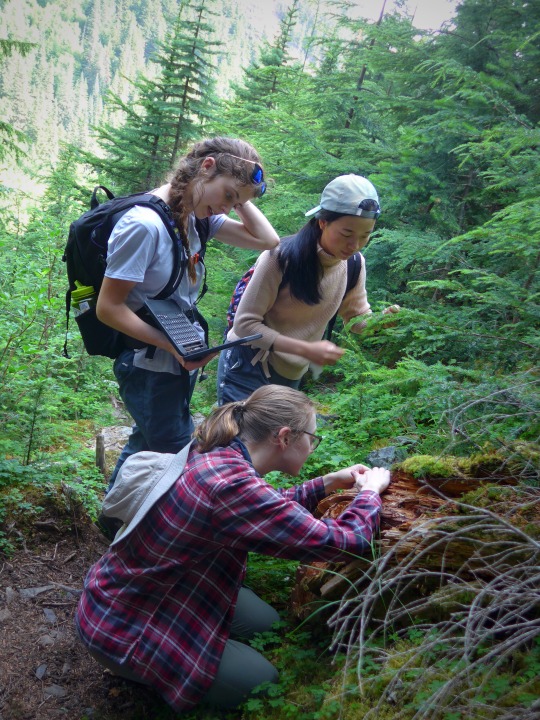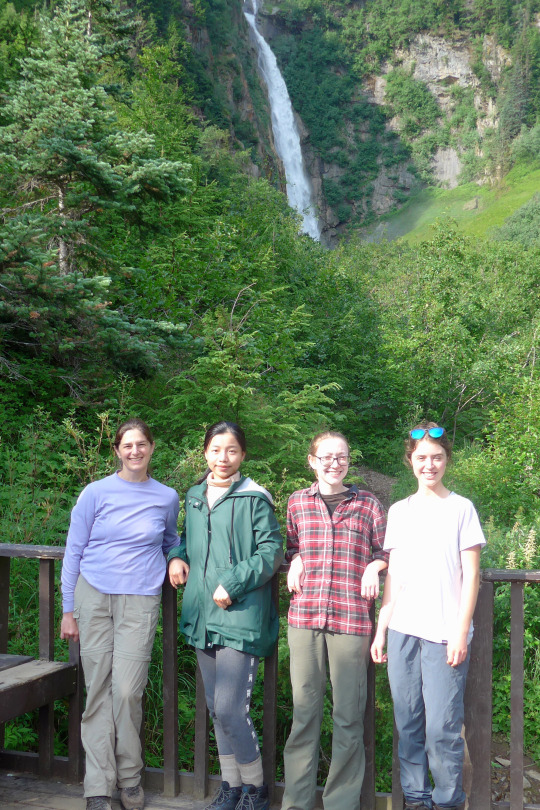#plotting it out from Tiny Days to established Graduates In Their Late 20s!
Text
in tonight's endeavor to be distracted from Everything, i have painstakingly jotted down the base, beginning ideas for a modern human au. it includes a gap-year group road trip in Wally's RV, Home
#& i've only got... the Very base ideas and 1 neighbor done#worldbuilding continues to be my go-to coping method#plotting it out from Tiny Days to established Graduates In Their Late 20s!#a worthy distraction indeed!#the most traditionally successful of the bunch is frank - an entomology professor!#poppy has a tea house! howdy still has his store! barnaby is a bartender for a gay club! eddie does drag performances there! etc!#its fun to think about and even more fun to jot down in a document#im trying to estimate whats most likely for them based on What We Know#which is not must! but i can make educated guesses!#and this is all for personal fun anyway <3#absolutely unprompted#i thought i would be scribbling tonight... no... au building....#also since this is a human au and they can all get injured#Im Putting Wally Darling In The Hospital#and im making it as emotionally/psychologically damaging to barnaby as possible#because thats the drama i live for babey! maiming and intense guilt!#nah dw im not gonna Maim him maim him. just gonna fuck em up a lil. broken bones and all that
53 notes
·
View notes
Text




The term fieldwork is used pretty much everywhere, to the extent that it can refer to an array of different tasks. Prior to this fieldwork opportunity in Smithers, my impression of fieldwork was limited to the classroom setting – walking around as a class with profs in Pacific Spirit Park looking at ferns and mosses and take notes, very chill and sweet… Undoubtedly, our Smithers field work exposed me to a different flavour: a challenging, exciting, and itchy (shoutout to our “welcome committee”) one.
“Are you ready for a road trip?” It all began with Deirdre - our lovely grad supervisor (more like a friend) -picking us up on that cool Saturday morning. Wait, back up back up back up: it began with me intently shopping for fieldwork two weeks earlier, making sure I’ve got the right footwear and raingear (which turned out to be lifesaving). In fact, 3 days before our departure, Deirdre alerted us with an email saying, “the risk of fries in British Columbia is very high at the moment” (her typo: fires) that we would need to play by the ear and be extra cautious. Obviously, on the ride there, fire was one of the many topics that we covered.
The ride was quite fun: Deirdre and Sophia shared driving responsibility while I sat at the back and ate apples. We managed to land a spot on a campground in Prince George the first night and that was my first time camping. Who would have thought it only got better from there.
After another 5 hours of ride, we reached Smithers, a small town with vibrant sceneries. Getting groceries, having a home-cooked meal, and lying down on my bed in our little cabin, only one thing was missing: running water. Well, how greasy can I get without a shower for a week? I calmed myself and fell asleep.
The first couple of days of fieldwork were not too bad. The weather was great, and PI Lizzie and Johnathan were there for emotional support. After a series of bushwhacking and trying not to fall over, I had some sense of what the research was about: essentially, we are testing the Janzen-Connell hypothesis in Babine Mountains Provincial Park, trying to see if the density of seedlings and their proximity to parent trees limit their survival and growth potential. There are around 15 square-shaped plots established on Mount Harvey, each was 400 m2 in size. All the adult trees were tagged and taken diameter at breast height (DBH) measurement to yield information on stand density for species within each plot. Along the transect (diagonal) of each plot, there were 6 0.5*0.5 plots where we measured seedling height and took germinant counts. The year 2021 is the 3rd year the lab came to this site, and ideally, at least two more years of observations will be made.
Working in the field came with many challenges. First and foremost, hiking. Since we are examining the gradient effect of elevation, plots are all over the mountain. Every morning we would hike up, and each following day we hiked up a bit further. Deirdre and Sophia are super fit while I am more of a slow hiker, setting my heavy pace here and there. Another fun thing adding to the hike is how much you would sweat. Since we would start the day super early in the morning, it was quite cold and therefore, we wore multiple layers. As we hiked up, our clothes and hair got super wet because of the sweat. Then when we reached the top of the mountain, it became cold again given the elevation, especially under the canopy where there was no sunlight. It got freezingly cold as the wind blew, not to mention locations like this are perfect as the breeding ground of mosquitoes (what my friend and I call the “welcome committee,” because in the wild where you hardly encounter a single person, worry not, you are always welcomed by swarms of mosquitoes). The mosquito jacket, though unsightly, was a welcome plus one.
Walking in the forest itself is, difficult. It is more like crawling than walking, especially in forest stands where there are a ton of down snags. They are too high to go over, and the branches are incredibly poky. Finding the plots was another big challenge. Living in a modern city certainly does not prepare me for wayfinding in the wild. There is nothing to use as references. Every direction you look, you see the same dense understory. The ground is covered with thick carpets of mosses, leaf litters, and nurse logs, and finding a tiny germinant in such a setting is like finding one particular grain of sand on a beach.
Besides taking measurements of seedlings and germinants and identifying trees, we were also tasked to set up new 20*20 plots at higher elevations than did previously. This is super interesting to me because as an oftentimes clueless undergrad reading the method section of journal articles, despite seeing people say, “we had this many plots so and so,” I never used to think about how those plots were established. Again, in the wild, there is no reference to help set up the boundary, so GPS and compass are key. To delineate a square-shaped plot in a dense forest, we first determine one corner of the plot by selecting a lucky tree candidate and flag it. Then we want to take the measuring tape and walk – in this case – 20 meters straight following the compass. This sounds a lot easier than reality because when you picture walking 20 meters in your head, you picture walking on paved and level ground. Now think again, only this time picture a windy and rainy day walking in a dense forest with bushes above your waist and trees blocking your straight path ahead with painfully poky branches ready to mess with you (remember also the welcome committee). Moreover, you are not walking on level ground: the slope can get as high as 60 degrees plus, and you are at risk of falling to the ground at any moment. If you are not completely walking in a straight line, you will need to go back and redo the boundary. Once you are finally happy with the direction and straightness of the measuring tape in your hand, you select another tree closest to you after you’ve walked 20 meters and this tree becomes your second corner. You then change direction to find the next corner and hopefully, by the time you get to your last corner, you are not too off. Now that you have a plot, you then go on to sample within the plot, taking measurements of trees and soils and whatever is of your interest.
Most days are like this. We hike, we do some sampling, we eat sandwiches, we do some other sampling. Not having access to running water made me realize how bad it is that we take running water for granted in cities. However, one silver lining about being dirty is that I got to sit whenever and wherever I wanted in the forests. Because of the worsening of the wildfires, we had to head back to Vancouver earlier than planned, but good enough that we finished our tasks in time.
Some good perks we had during this field season included a couple of great hikes beyond the tree line (Hudson Bay Mountain), a visit to Jim Pojar’s house (the author of the BC plant book, my forestry friends were so jealous), the Kombucha beer Lizzie bought me, and the detour to Jasper, Alberta that we took on our way back to avoid the fires. With no doubt, this fieldwork was invaluable to me as it helped me gain insight into what field ecologists do and made me think about what kind of work, I would like to carry out for my graduate studies one day. I was quite tired after the fieldwork, but of course, I was barely scratching the surface here. On our way back to Vancouver, seeing the smoke of forest fires rise to the sky, so tragically beautiful that many people were taking pictures, I thought to myself: Patience, endurance, and curiosity are for sure, major ingredients to make a good scientist, and they are attributes that need cultivation. I hope there is something we can do for the planet’s tomorrow. I hope it is not too late.
- Alina Zeng, August 2021
1 note
·
View note